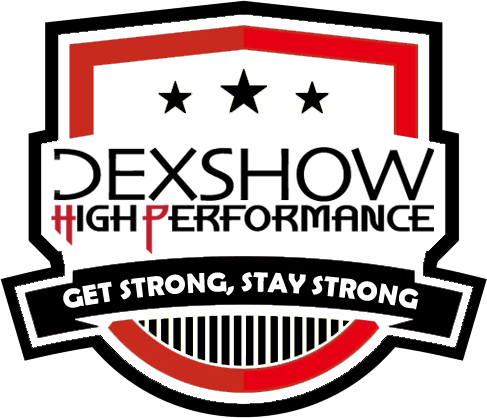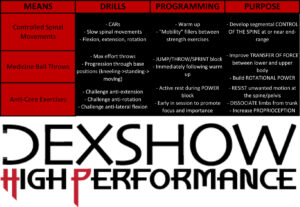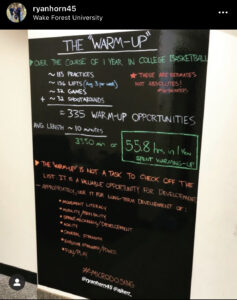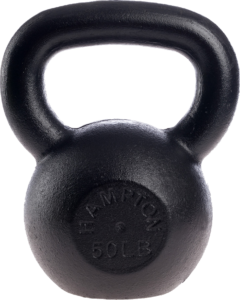I’m back after a bit of a writing hiatus for the third and final installment of my Lifting for Kids series and I want to look at what good training actually looks. If you haven’t read Part I or Part II, use these links to check them out before reading this article. If you don’t want to read them, WAKE UP, and then know that:
- Weightlifting is safe for youth and has lower incidence of injury than virtually any other sport
- Weightlifting has incredible health, wellness, and performance benefits for everyone, including youth
HOW CAN MY KID TRAIN SAFELY AND EFFECTIVELY?
I think it’s really important for parents to understand ONE MAJOR THING when it comes to youth weightlifting and training: IT NEEDS TO BE COACHED AND SUPERVISED BY SOMEBODY WHO IS QUALIFIED TO DO SO. Here is a slide from one of my presentations on how to help you choose who should train your child:
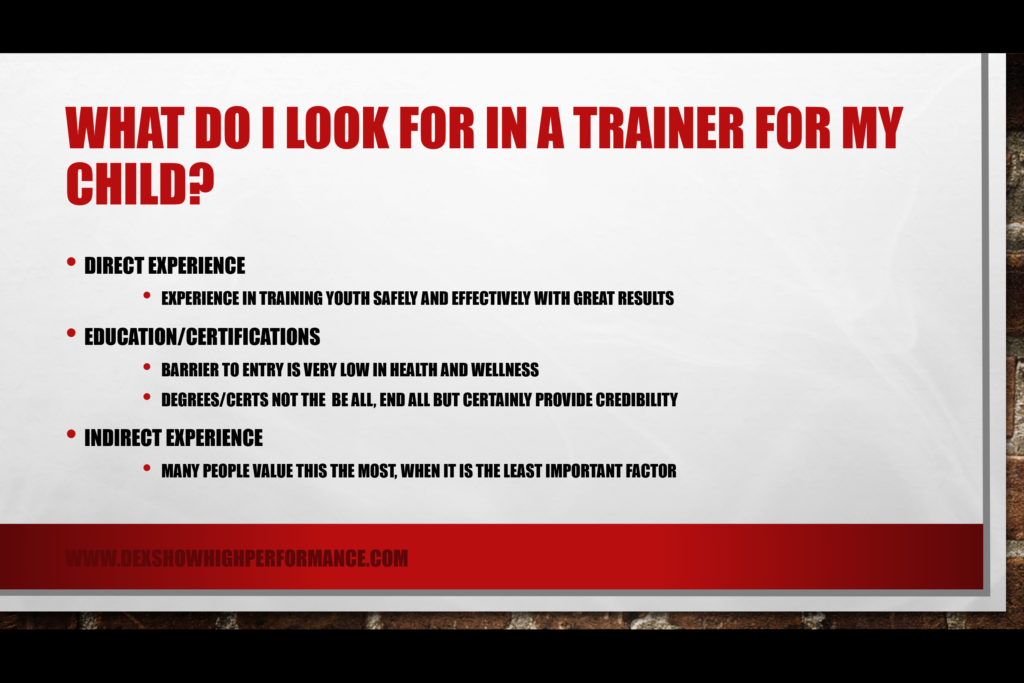
The biggest issue I tend to see in parents choosing trainers for the kids is that the priorities shown above are flipped. Going with the assumption that because someone was a great hockey player/weightlifter/trainee makes them qualified to coach other people how to become great IS A FALLACY AND POTENTIALLY HARMFUL.
In my area, it’s common for retired pro hockey players to transition to coaching hockey skills on the ice – fine, you can use your name and potential expertise to help some of the local youth develop the on-ice skills that you were once taught. We hope that these former players are licensed to coach and continue to develop their skills and knowledge through certifications, continuing education, and relentless pursuit of results. What happens next is the problem – these “skills coaches” get greedy and see how eager parents are to shell out hard earned money to make their kid a future pro at hockey. They start to offer “off-ice” or “dryland” training without any knowledge, experience, certifications, or education IN PRESCRIBING EXERCISE PROGRAMS TO PEOPLE. What’s worse? They’re doing it to kids and are likely uninsured to be overseeing physical exertion. Unqualified coaches/trainers have no place in youth athletic development. If we want the best for our kids, we must do our due diligence and seek out coaches/trainers who:
- Have extensive EXPERIENCE training youth and producing results (MOST IMPORTANT)
- Have they trained youth safely and effectively?
- If you’re unsure, ask for references of other folks who have used that coach
- Have up-to-date certifications IN THE FIELD (VERY IMPORTANT)
- Are they qualified to prescribe exercise programs to people?
- Do they understand the main tenets of physical adaptation and how to elicit positive responses?
- Are they certified in First Aid/CPR and other safety qualifications? These are kids we’re talking about. Never put your child at risk.
- Have first-hand experience of what they are implementing (LEAST IMPORTANT)
- Good hockey players don’t necessarily become good hockey coaches
- Good bodybuilders don’t necessarily become good trainers
- Previous experience is an added bonus, but only after the first two criteria are met
Parents – do your research, ask for references, make adult decisions. Now let’s get into the actual training stuff.
HOW DO WE NEED TO TRAIN YOUTH?
When we are looking at how to train anybody, it’s best to start with the end in mind – WHY IS THIS INDIVIDUAL TRAINING AND WHAT DO THEY NEED TO GET OUT OF IT – and when it comes to youth, the reason has to be Long Term Athletic Development (LTAD). I wrote a little bit about LTAD at the end of Part II, but it is a 6-stage progression model of athletic development put forth by Istvan Balyi. In an introduction to his model he writes:
“A specific and well-planned practice, training, competition and recovery regime will ensure optimum development throughout an athlete's career. Ultimately, sustained success comes from training and performing well over the long-term rather than winning in the short-term. There is no short-cut to success in athletic preparation. Overemphasizing competition in the early phases of training will always cause shortcomings in athletic abilities later in an athlete's career.”
Istvan Balyi Tweet
In the LTAD model, Balyi uses windows of development for youth to accelerate motor control and performance metrics and vouches for “slow-cooking” their physical and mental adaptations by developing a wide variety of movement skills and variability before actually specializing in any sport or training. This will ensure athletes reach their true athletic potential rather than burning out, getting hurt, or peaking too early. What does this mean?
- Make training FUN for kids but prioritize it and sport practice OVER competition
- Performing exercises well and executing skills is fun. Seeing results is fun. Being told to do squats until you puke isn’t fun
- Be consistent and don’t rush – LTAD is a period of 10+ years of development
- Quality over quantity in training and practice. Nobody cares about the sports performance of a 13 year old when they are being recruited at 18
- “Sport-specific” training IS NOT FOR YOUTH and probably doesn’t exist
- Master the basics in the Learn to Train and Train to Train phases
- Mimicking sporting movements under resistance is a recipe for overuse injury for untrained youth
- The only true sport-specific training is actually practicing that sport
- Experienced, knowledgeable coaching and oversight
- Do your research and make an educated decision on who you trust your child’s development with
- How sweaty, sore, or exhausted your child is is not an indicator of effectiveness
- Adequate exercise selection
- Training needs to be appropriate for the strength level, motor control, and awareness of the child
- Teach the fundamental movement patterns
- A prevalent example of a very poor job of this would be when coaches make kids do 50 push ups every practice (when most cannot do one) without knowing what prerequisites make up a push up (MY BEEF WITH POOR PUSH UPS HERE)
WHEN SHOULD YOUTH START TRAINING/WEIGHTLIFTING?
I’m of the opinion that youth should begin to be exposed to strength training and weightlifting somewhere between ages 10-12. Girls tend to develop a little bit earlier than boys so they may be at the lower end of that age range. As I’ve shown with the previous parts of this series, weightlifting has innumerable benefits and very low risk for youth when administered properly.
I hope this series has shed some light on the immense benefits of training for youth, as well as dispelled some of the common myths and misconceptions that continue to current youth sports culture. We need to make the best decisions for our kids based on knowledge, science, and intuition NOT by trying to keep up with the Joneses. If you take anything away from this article, let it be this: find someone qualified to teach and coach your youth athlete how to train appropriately, know that it’s a long term process, and make sure it’s fun. Best believe my kids are going to grow up in the gym and I’ll have them lifting twice per week from 10 years old on, as long as they enjoy it. They will also be playing multiple sports, taking time off from each of them to do kid stuff, and not specializing until they have to. Parents need to make adult decisions for their kids – use these posts to your advantage. Reach out with questions in the comments or send me an email: trainwithdex@gmail.com.
Get strong, stay strong.
Coach Dex
